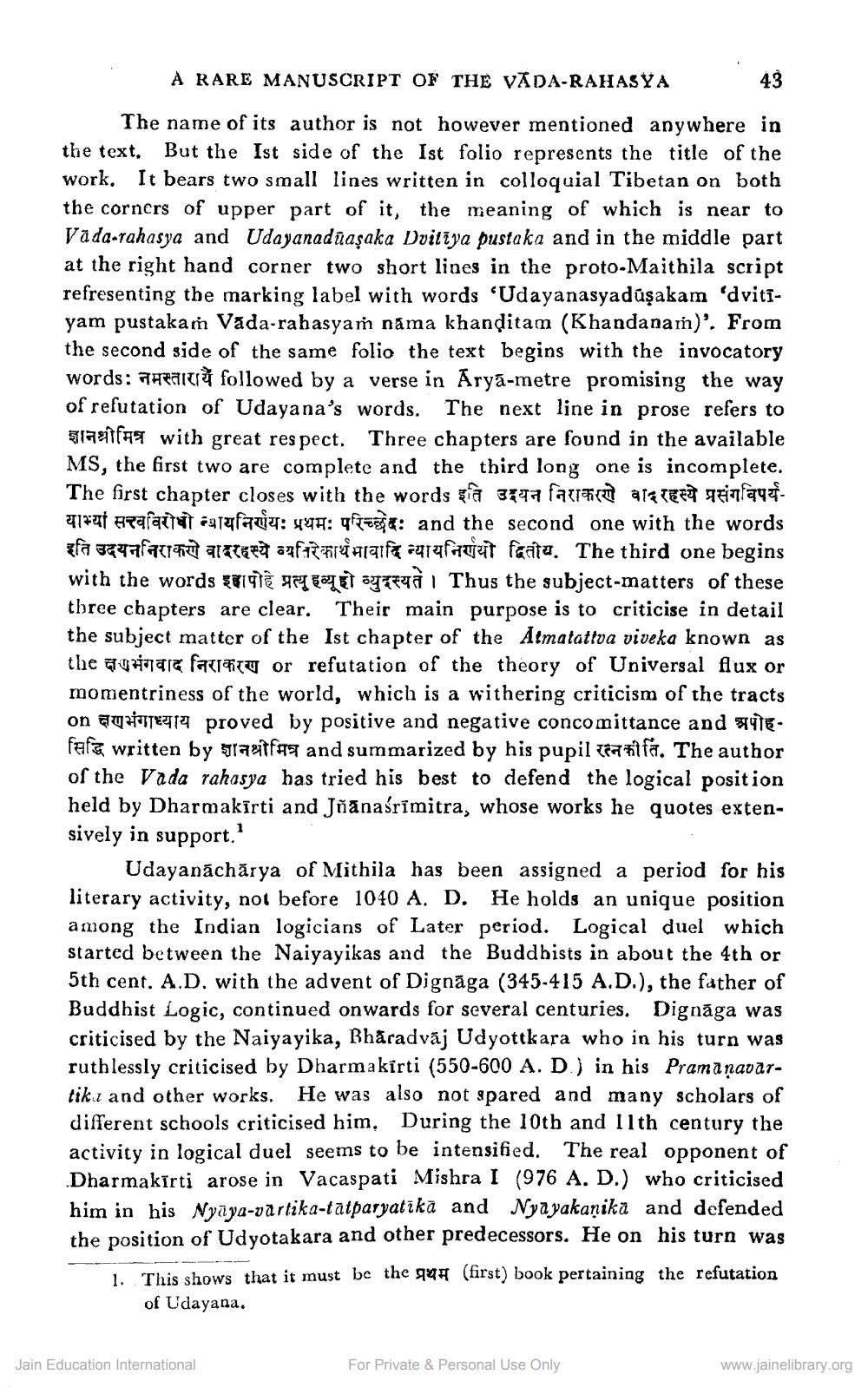________________
A RARE MANUSCRIPT OF THE VĀDA-RAHASYA
43
The name of its author is not however mentioned anywhere in the text. But the Ist side of the Ist folio represents the title of the work. It bears two small lines written in colloquial Tibetan on both the corners of upper part of it, the meaning of which is near to Väda.rahasya and Udayanadũaşaka Dvitīya pustaka and in the middle part at the right hand corner two short lines in the proto-Maithila script refresenting the marking label with words 'Udayanasyaduşakam 'dvitiyam pustakam Vada-rahasyaṁ nama khanditam (Khandanam)'. From the second side of the same folio the text begins with the invocatory words: taitů followed by a verse in Aryā-metre promising the way of refutation of Udayana's words. The next line in prose refers to
lastfast with great respect. Three chapters are found in the available MS, the first two are complete and the third long one is incomplete. The first chapter closes with the words hasta farraic ats Tech qanayefqirat Araratat catafadu: 448: qfar and the second one with the words sfa 547fACT FIT altera anfitime naife 2914fauzit faata. The third one begins with the words &19TÊ 9TL ELET and Thus the subject-matters of these three chapters are clear. Their main purpose is to criticise in detail the subject matter of the Ist chapter of the Almatattva viveka known as the arc facity or refutation of the theory of Universal flux or momentriness of the world, which is a withering criticism of the tracts on क्षणभंगाध्याय proved by positive and negative concomittance and अपोह. सिद्धि written by ज्ञानश्रीमित्र and summarized by his pupil रत्न कीर्ति. The author of the Vada rahasya has tried his best to defend the logical position held by Dharmakīrti and Jñanaśrīmitra, whose works he quotes extensively in support."
Udayanáchărya of Mithila has been assigned a period for his literary activity, not before 1040 A. D. He holds an unique position among the Indian logicians of Later period. Logical duel which started between the Naiyayikas and the Buddhists in about the 4th or 5th cent. A.D. with the advent of Dignāga (345-415 A.D.), the father of Buddhist Logic, continued onwards for several centuries. Dignāga was criticised by the Naiyayika, Bhäradvāj Udyottkara who in his turn was ruthlessly criticised by Dharmakirti (550-600 A. D.) in his Pramanavartik, and other works. He was also not spared and many scholars of different schools criticised him. During the 10th and 11th century the activity in logical duel seems to be intensified. The real opponent of Dharmakirti arose in Vacaspati Mishra I (976 A. D.) who criticised him in his Nyāya-vārtika-tatparyatīka and Nyayakanika and defended the position of Udyotakara and other predecessors. He on his turn was
1. This shows that it must be the 944 (first) book pertaining the refutation
of Udayana.
Jain Education International
For Private & Personal Use Only
www.jainelibrary.org




